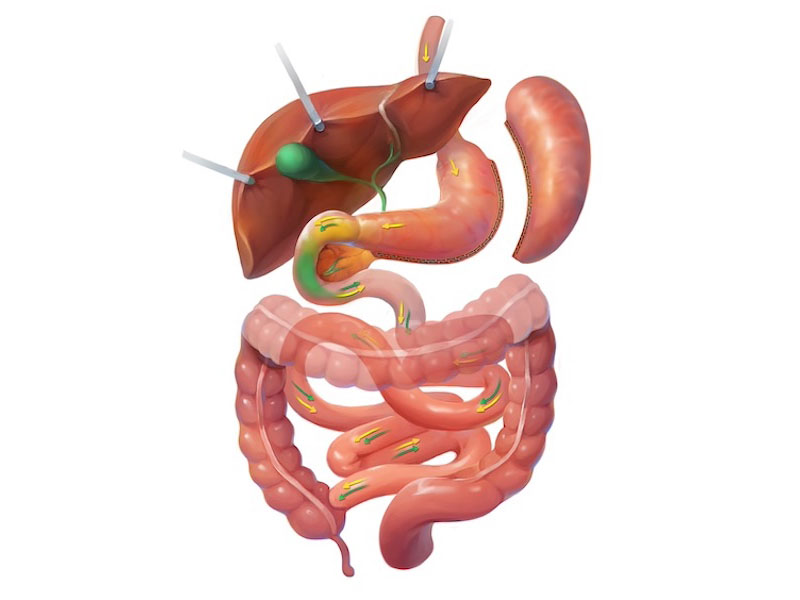
Single Anastomosis Duodeno-Ileostomy
The Single Anastomosis Duodeno-Ileostomy, or SADI, is a newer bariatric surgical procedure designed as a simplified version of the duodenal switch. It combines both restriction and malabsorption to promote significant weight loss while reducing some of the risks associated with more complex surgeries. In addition to achieving long-term weight reduction, SADI is highly effective in improving or resolving obesity-related conditions such as type 2 diabetes, high cholesterol, fatty liver disease, and high blood pressure. Because it is relatively newer, you may not have heard of SADI as often as gastric bypass or sleeve gastrectomy, but it is increasingly recognized for its balance of effectiveness and safety.

Like most modern bariatric procedures, SADI is performed using minimally invasive robotic or laparoscopic techniques. The surgery begins with a sleeve gastrectomy, removing about 75% of the stomach to limit intake and reduce ghrelin, the hunger hormone. The second step creates a single connection between the duodenum and the ileum, bypassing a portion of the small intestine. This single anastomosis (connection) simplifies the procedure compared to the classic duodenal switch, which requires two.
Patients undergoing SADI can expect significant weight loss, often losing 70–80% of their excess body weight. Many also experience remission or major improvement of metabolic conditions such as type 2 diabetes and sleep apnea. Because only one intestinal connection is made, complication rates are generally lower, and the surgery is shorter.
The SADI offers durable weight loss, high rates of diabetes improvement, and fewer surgical risks than the traditional duodenal switch. Patients also benefit from a reduced risk of dumping syndrome since the pylorus (the stomach’s outlet valve) is preserved, allowing more normal digestion.
Patients who undergo the SADI will usually spend one night in the hospital. This, of course, will depend on the speed at which the patient is recuperating and healing.
As with other malabsorptive surgeries, patients must commit to lifelong vitamin and mineral supplementation and regular follow-up. While safer than the traditional duodenal switch, SADI still carries risks of nutrient deficiencies and requires close medical supervision. As with any procedure involving a gastric sleeve, there is the potential for postoperative reflux, which can be managed in multiple ways, non-surgically and surgically.
To learn about SADI surgery and determine if it may be the right option for you, we encourage you to contact our office to schedule a consultation with Dr. Ghanem.